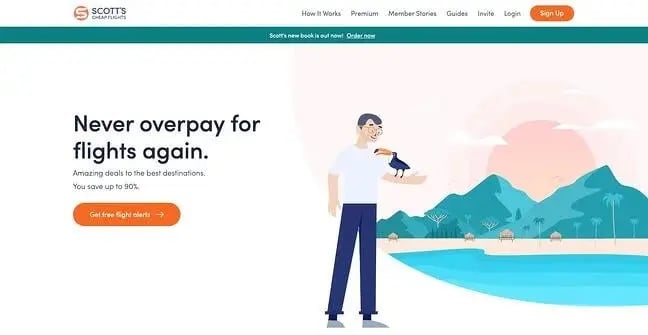The Ultimate Guide to Modern Web Site Design Trends
In the ever-evolving electronic landscape, modern-day website style trends play an important duty in shaping customer experience and involvement. From the surge of minimal style principles that prioritize simplicity to the influence of strong typography in specifying brand name identity, each element adds to a natural online presence. The focus on mobile-first and responsive approaches, together with ingenious microinteractions, better improves use. Furthermore, the expanding concentrate on sustainable website design techniques shows a commitment to environmental obligation. These fads collectively raise important questions about the future of effective website design and what it means for organizations and consumers alike.
Minimalist Style Concepts
Minimal design principles emphasize the concept that much less is a lot more, supporting for simpleness and performance in visual communication. This approach strips away unnecessary aspects, concentrating instead on crucial elements that share the desired message effectively. By focusing on clarity, minimalist style boosts individual experience, allowing visitors to browse internet sites easily.
Core tenets of minimal design consist of the usage of sufficient white space, which develops a sense of equilibrium and company. This negative area not just guides the customer's interest to key aspects but likewise cultivates a soothing visual ambience. Furthermore, a restricted color combination is frequently employed, using monochromatic plans or soft shades to preserve visual cohesion and prevent frustrating the user.
Typography plays a vital duty in minimal design, where clear typefaces are picked for their simplicity and performance in communicating content. Eventually, minimalist layout concepts grow a concentrated atmosphere that encourages users to involve with the material, enhancing the general efficiency of contemporary web site layout.
Vibrant Typography Options
Welcoming vibrant typography choices has become a defining characteristic of modern website design, as it efficiently captures attention and shares solid messaging. Designers are significantly making use of typography not simply as a practical component yet as a crucial aesthetic part that boosts the general aesthetic and individual experience.

In addition, the juxtaposition of bold typography with minimal layout principles permits striking contrasts, enhancing readability while preserving aesthetic appeal. Using whitespace around bold message better emphasizes its significance, making sure that the message resonates with the target market.
As digital landscapes become much more competitive, leveraging bold typography allows brand names to separate themselves and leave a long lasting perception. The cautious selection of fonts and their application can evoke emotions, establish tone, and drive action, making strong typography a vital device in contemporary site layout. Eventually, it is an effective method to improve storytelling and ensure that vital messages are not just seen but also really felt.
Responsive and Mobile-first Style
Mobile-first and receptive design has arised as an essential principle in modern-day web site growth, mirroring the increasing dependence on mobile gadgets for accessing online content. As user actions changes towards mobile surfing, developers should focus on producing experiences that adapt seamlessly across various display dimensions and resolutions.
A receptive layout makes sure that a web site immediately adjusts its format, images, and functionality based on the tool being made use of. Mobile-first style supporters for developing internet sites originally for smaller displays, subsequently scaling up to larger display screens.
Executing responsive and mobile-first principles not just satisfies individual preferences yet also lines up with search engine optimization (SEARCH ENGINE OPTIMIZATION) practices. Major online search engine, like Google, prioritize mobile-friendly web sites in their positions, making it vital for services to embrace these style methods. In a competitive electronic landscape, welcoming responsive and mobile-first layout is not just a choice; it is essential for ensuring ease of access and engagement with a diverse target market.
Engaging Microinteractions
Microinteractions play a pivotal function in improving user interaction and overall website experience, particularly in the context of responsive and mobile-first layout. These refined style elements give prompt feedback to users, making interactions much more pleasurable and user-friendly. Examples consist of switch computer animations, notice notifies, and filling indicators, which not just overview customers however additionally develop a sense of link with the interface.
Incorporating interesting microinteractions can significantly enhance usability by lowering cognitive load. When individuals obtain aesthetic or auditory comments upon doing activities, such as clicking a switch or submitting a form, they feel extra positive in their options. This fosters a smoother navigation experience, inevitably boosting individual retention.

As web site design fads continue to progress, the relevance of microinteractions can not be overemphasized. They function as the refined yet powerful touchpoints that transform ordinary interactions into phenomenal experiences, thereby raising the overall efficiency of modern-day web style.
Sustainable Website Design Practices
Lasting website design practices are ending up useful link being significantly important as the digital landscape grows and ecological issues increase. Programmers and designers are recognizing their duty to create internet sites that not just offer customer needs yet also lessen ecological impact. This technique includes a number of crucial methods.
First of all, optimizing power intake is extremely important. Websites must be made to fill rapidly and effectively, which reduces Click This Link web server energy use and boosts user experience. Methods such as picture compression, reducing HTTP requests, and making use of contemporary coding techniques contribute dramatically to this goal.
Second of all, choosing environment-friendly holding suppliers is crucial - website design. Lots of hosting companies are currently powered by renewable energy sources, allowing web sites to run in a more sustainable manner. This option shows a dedication to lowering carbon impacts
Moreover, adopting a minimalist style can enhance sustainability. Less elements on a web page cause much less data transfer, which not just quickens loading times yet additionally conserves sources.
Lastly, advertising electronic access makes sure that web sites reach a larger target market without unneeded bloat, straightening individual experience with ecological responsibility. By incorporating these sustainable methods, internet developers can contribute positively to both user interaction and the world's wellness.
Final Thought
In summary, contemporary website design trends emphasize the integration of minimal concepts, vibrant typography, and receptive design to enhance user experience. Engaging microinteractions contribute to remarkable interactions, while sustainable methods advocate for environmentally conscious development. Jointly, these aspects not just elevate aesthetic appeal yet additionally improve performance, making certain that websites are both aesthetically striking and easy to use. Embracing these fads is necessary for producing impactful electronic experiences that reverberate with individuals in a progressively competitive on the internet landscape.
In the ever-evolving digital landscape, modern-day website design patterns play a vital role in shaping individual experience and interaction. By prioritizing clarity, minimalist style enhances individual experience, allowing site visitors to browse web sites easily.
Eventually, minimal design concepts cultivate a concentrated atmosphere that urges users to involve with the content, improving the total try this effectiveness of modern-day website design.Microinteractions play an essential function in improving customer involvement and general website experience, especially in the context of responsive and mobile-first style.In recap, modern site layout fads emphasize the assimilation of minimal concepts, bold typography, and responsive design to boost user experience.